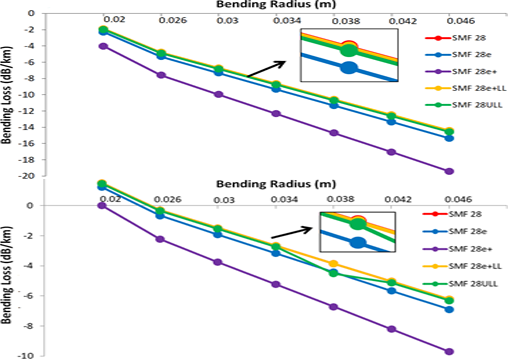Analysis of bending losses in single-mode optical fiber for determining optical signal quality
DOI:
https://doi.org/10.59190/stc.v5i3.324Keywords:
Bending Loss, Optical Signal, Simulation, Single-Mode Fiber, WavelengthAbstract
Optical fiber is an advanced transmission medium composed of glass fibers, offering significantly higher data transfer speeds compared to conventional electrical cables. This study aims to analyze power loss resulting from bending in single-mode optical fibers (SMF) to assess the impact on optical signal quality. Five distinct SMF types were simulated using OptiFiber software at wavelengths of 1310 nm and 1550 nm, with bending radii varying from 20 – 46 mm in increments of 2 mm. The results demonstrate that power attenuation in optical fibers is affected by the wavelength of operation and bend radius. At a wavelength of 1310 nm, the highest material loss was recorded in SMF-28 at 0.0125 dB/km, whereas at 1550 nm, SMF-28 exhibited the highest material loss of 31.963 dB/km. Moreover, an increase in bending radius results in a reduction of bending losses, while a decrease in bending radius leads to a significant increase in losses. These insights contribute to the development of improved fiber optic cable designs by advocating the use of enhanced protective shielding to mitigate bending-induced signal degradation.

Downloads
Published
Versions
- 2025-06-30 (2)
- 2025-06-30 (1)
How to Cite
Issue
Section
License
Copyright (c) 2025 Fatima Nur Ramadhani, Saktioto Saktioto, Zulkarnain Zulkarnain, Defrianto Defrianto, Mohammed M Fadhali

This work is licensed under a Creative Commons Attribution 4.0 International License.










